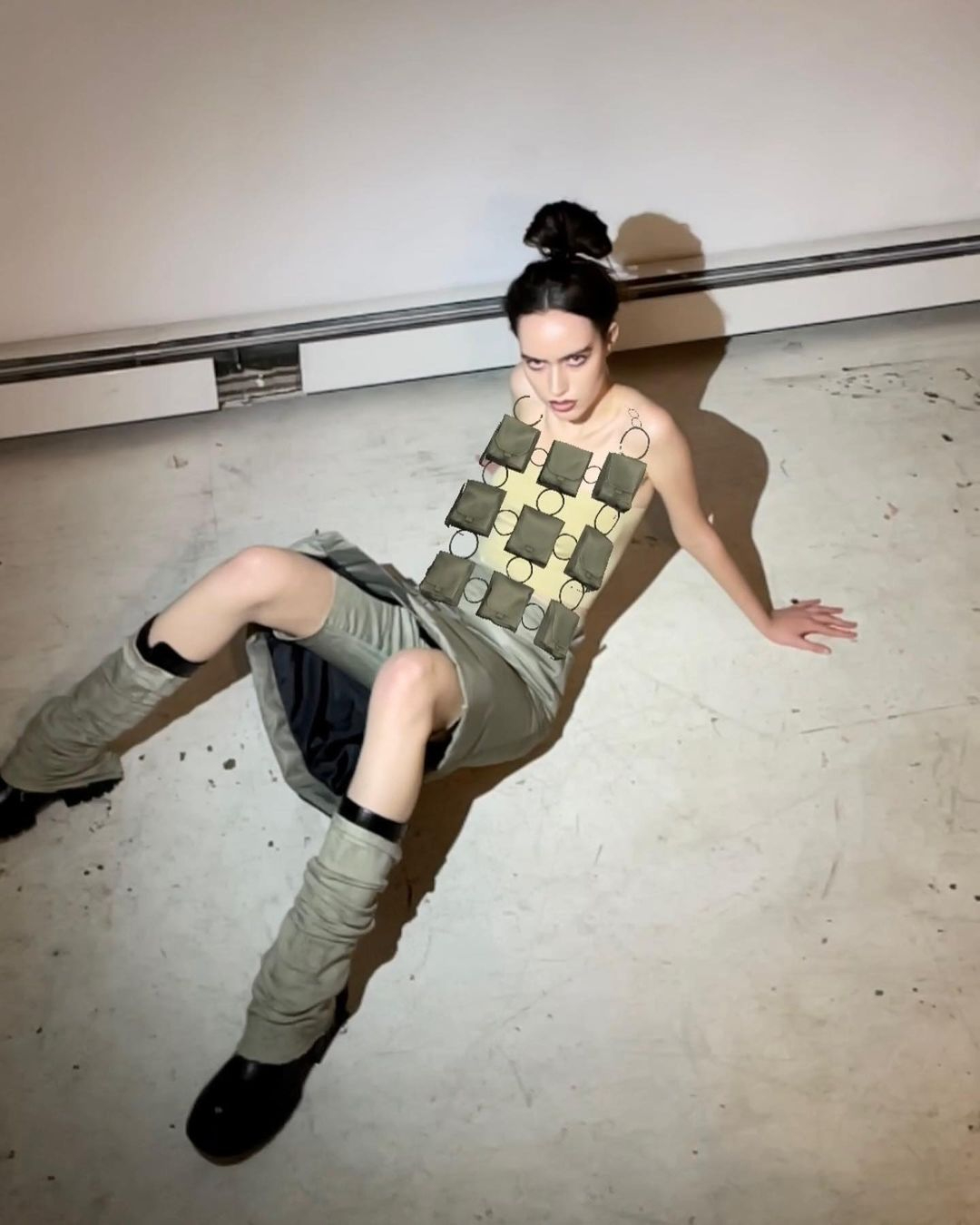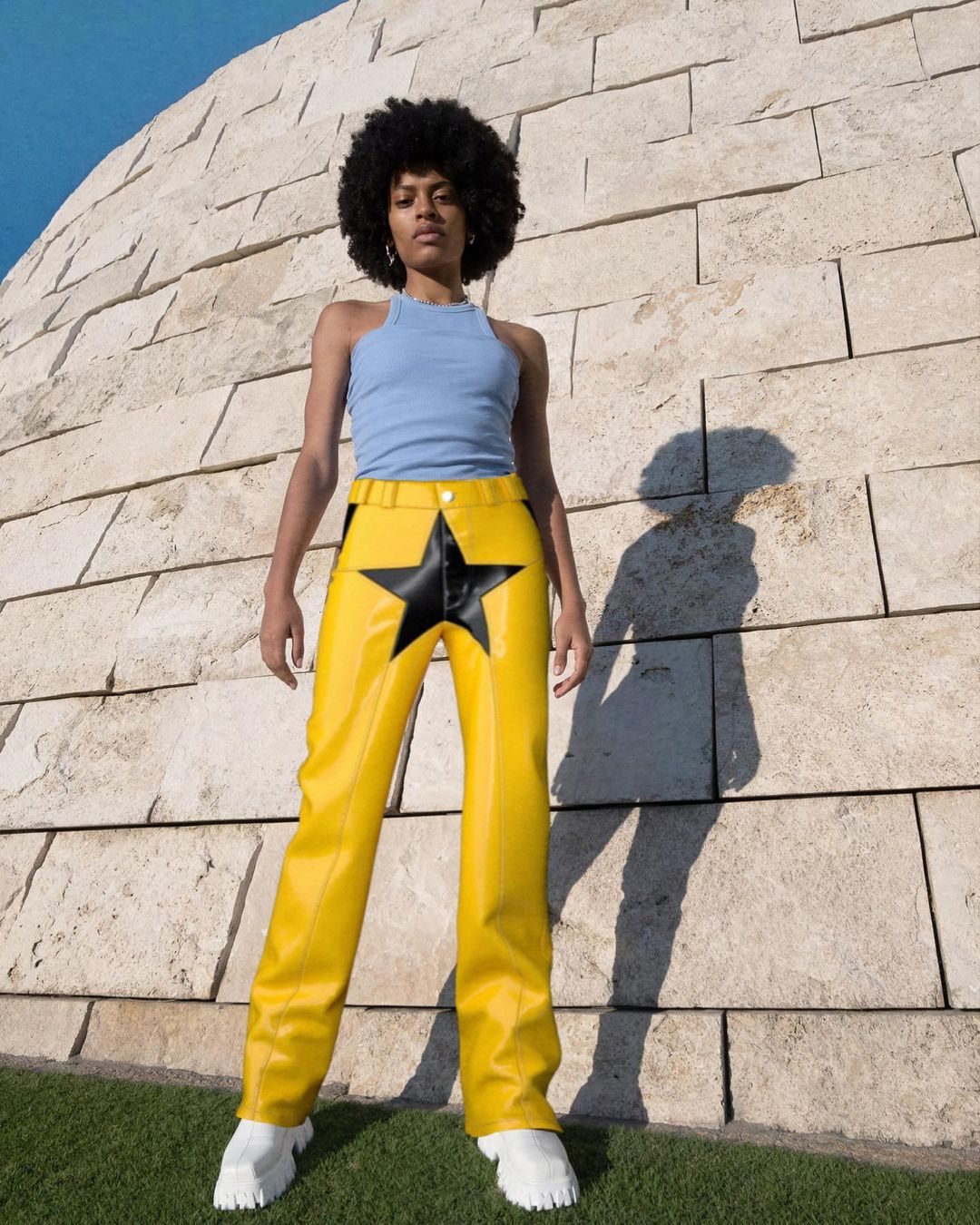Glamcult is always here for platforms that bring creatives together and ZERO10 does just that.


From musicians to designers, the new digital fashion platform ZERO10 collaborates with visionaries, dropping curated digital fashion collections. Ever the trailblazers, their newest project is with none other than Mexican must-know designer, Barragán. This latest release includes four digital garments you can wear using just your phone (alongside one limited NFT). The four garments include a digitised version of the colourful “hero” dress from Barragán’s Terracotta collection, a wide draped sillhoute reminiscent of 70s vacation wear. Alongside is a double-layered flannel shirt that’s flames erupt from the bottom and the iconic Lil Star Trousers. These trousers are digital faux yellow leather with an animated black star in the front – giving us total classic Barragán mixed with a sprinkling of Kill Bill. Lastly, there is Barragán’s famous Pocket Vest from his SS17 collection turned NFT. This iconic vest combines military-style pockets with delicate chainmail and is now digitally wearable for those who get their hands on it.

By utilising body tracking and augmented reality technology, ZERO10 is able to make near life simulations of what the clothes would look like in the flesh. This enables users to wear the clothes without physically owning them. This creates not only a new way of consuming but also makes designer clothing way more accessible. While the Lil Star Pants do cost money to unlock, they are only $4.99, a much more affordable price than a physical pair would be. Technology like this unlocks new interactions between the consumer and the designer and in turn can create a stronger relationship. While the Pocket Vest costs 0.1 Ethereum which is approx. €280, there are only 10 editions of the NFT available, making the ownership on one much more exclusive than the other items.
Although, today, NFT has become a total buzzword, digital fashion is by no means anything new. Character customisation has been around in video games since around the early ‘90s. The Sims is perhaps the closest related game to today’s digital fashion as dressing the sims is a crucial part of the game. For years, simmers have designed extra downloadable clothes (called custom content) in order to have a greater wardrobe for their sims. However, having digital clothes to dress yourself is the novelty that brands like ZERO10 bring to the table. Digital fashion was first introduced in 2018 by the brand Carlings, the Scandi jeans company, who asked buyers to send them a photo of themselves that the brand could photoshop the digital garments on. In 2019, the brand experimented with augmented reality allowing consumers to try on a t-shirt using their phone camera. While Carlings is recognized as the first brand to experiment with digital fashion, the pandemic has catalysed its presence into the fashion world. Now we see brands actively pioneering this subgenre of fashion.

As we are constantly becoming more digital, we must consider how the concept of ‘the body’ is also changing. If we consider the body as a flexible casing for identities, we no longer exist merely in the physical sense. We now – or at least everyone reading this article – have an online bodily presence. Digital fashion can clothe this body, this extension of our offline being. Within the digital space, designers can create whatever they can imagine – no longer are they bound to that pesky gravity. This generates even more creative possibilities for the self expression of designers and in turn, new online self expression for consumers.
However, its place in the fashion world goes beyond digitization. It is further linked to sustainable practises. As we all know by now, the fashion industry is a primary polluter and in response to this many young designers have been developing more sustainable methods. Using pixels as a medium is a part of these efforts and helps combat the mass waste that garment production creates. Companies like ZERO10, The Fabricant, Auroboros and DRESSX understand that this new medium and way of ‘wearing’ could positively change the way we consume.
Not everyone is a fan of digital fashion and if you are not convinced yet either that’s totally fine. Digital fashion disrupts the normal modes of consumption, but it also redefines what fashion design can be in an uncomfortable way. The traditional artistry and beauty of materiality is taken out of the equation. For the fashion lovers who love to feel and see the craft in their clothes, this ever rising trend may be vexing. The concept of digital fashion is also heavily linked to NFTs which are greatly controversial in the art world. Many visual artists are unhappy with the NFT industry as the system does not offer the protection everyone – including the founders of the system – thought it would. Countless artists have had their work appropriated and stolen by other users. All that being said, digital fashion does have potential. Digital fashion may become further popularised by its presence in the NFT world but this popularity could in turn attract people to platforms that offer broader digital clothing services. If these sites become popularised then it could help solve the overconsumption of hyper trendy clothes, allowing people to wear looks without having to physically purchase a short lived trend. All in all, we at Glamcult are here to ride the digital fashion wave to see how this subgenre will evolve. And just remember, David Bowie did have a website called Bowienet in the ‘90s because he believed the internet would change the music industry. Anything is possible.
See the collection and download the app here
Images courtesy of George Yashin and ZERO10
Words by Ella Paritsky